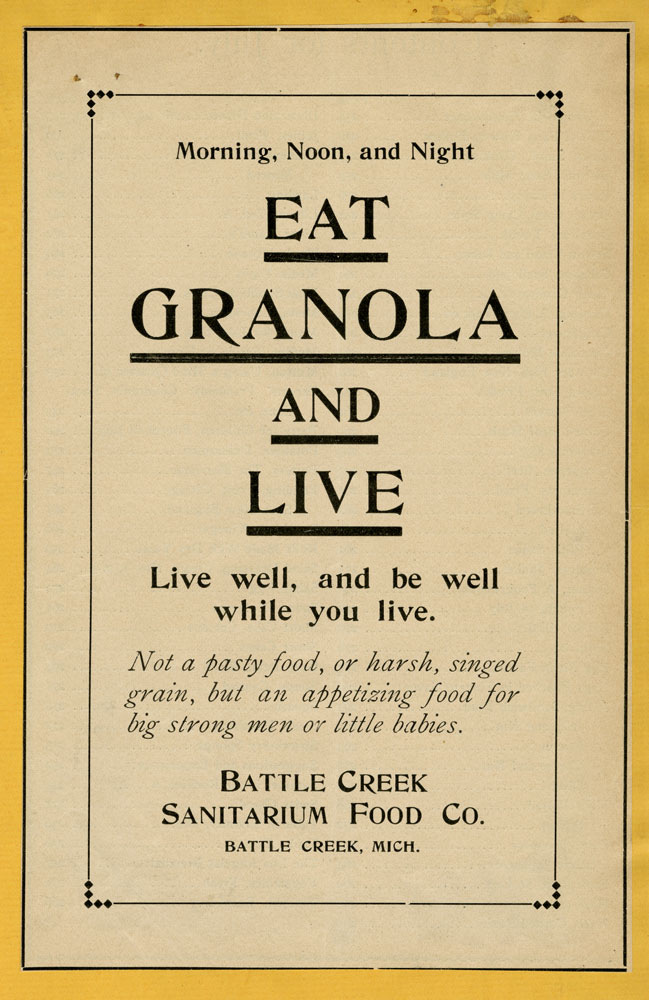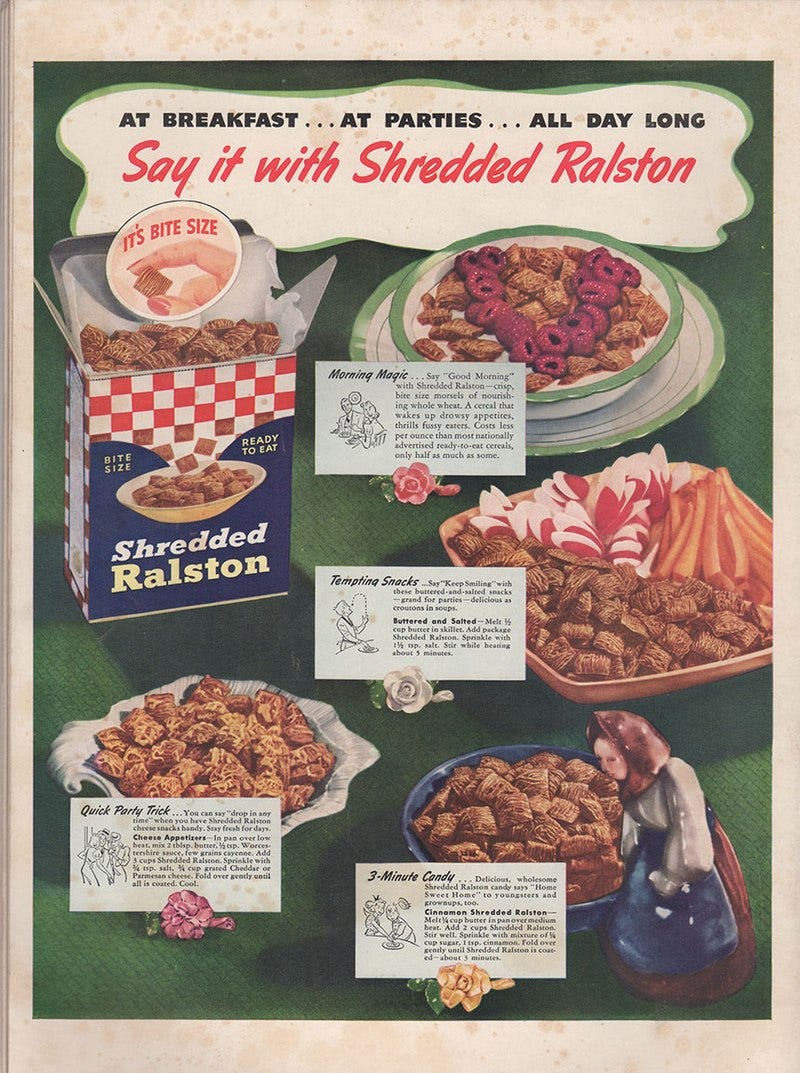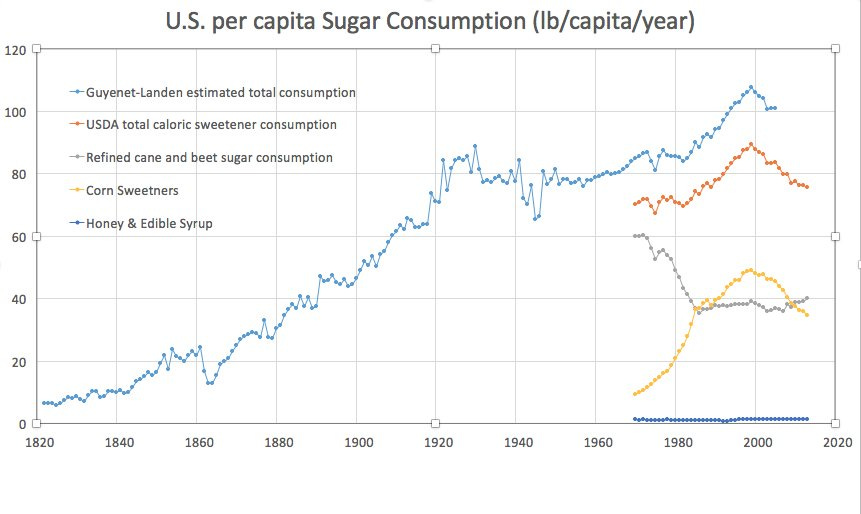

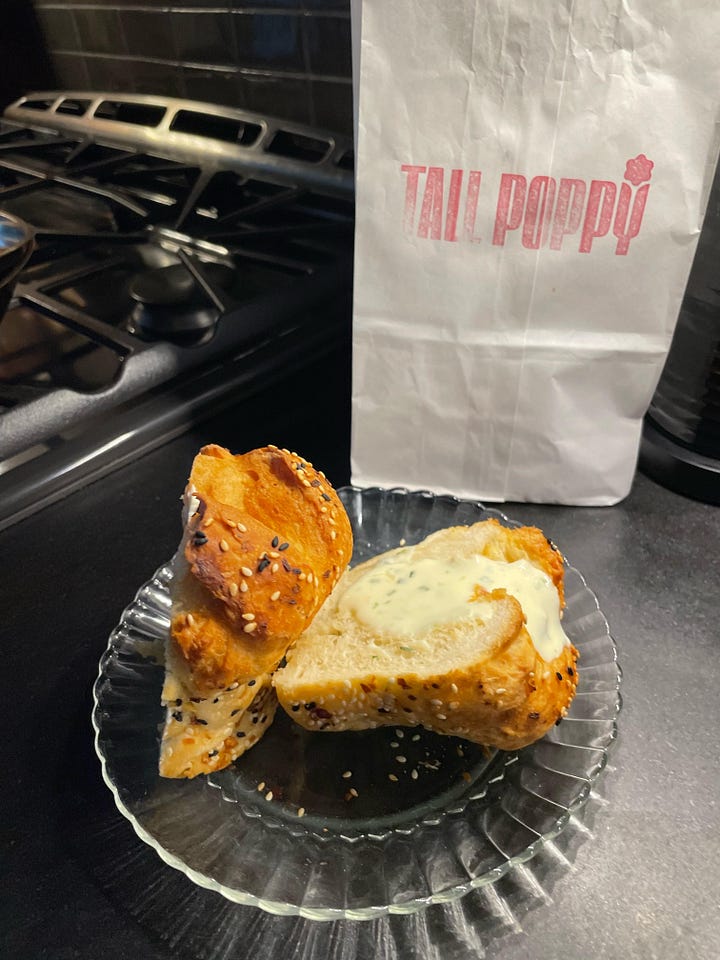
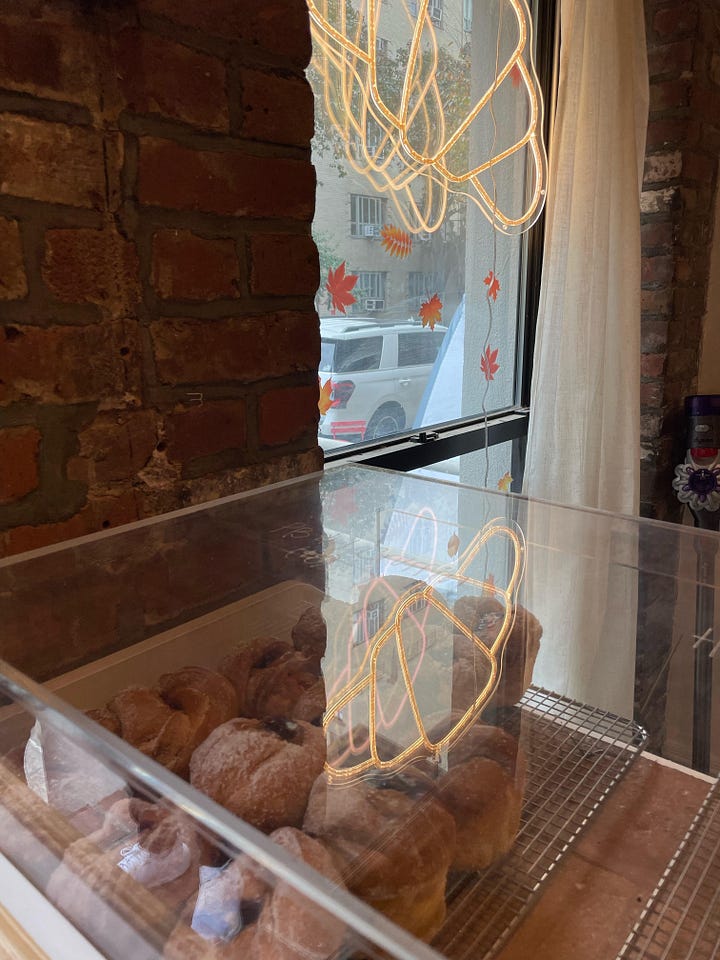
It’s 8am on a Saturday, and lucky me, I woke up early enough for a baked good in NYC. My breakfast treat of choice today is an Everything Cruffin from Tall Poppy, one of Chelsea’s hottest new bakeries that deserves its long line out the door. As I stood at the pastry case, my creature of habit made it clear to pick something savory — the Everything Cruffin just makes sense for breakfast (might I also recommend the Green Eggs & Ham Cruffin?). But the jammy strawberry danish topped with a cloud of matcha cream cloyingly caught my eye so I walked away $20 lighter with one savory and one sweet treat.
The plan was to save the matcha one for later in the day, as a “dessert”, in avoidance of feeling guilty over eating something sugary for breakfast. But that didn’t last long. Breakfast quickly turned into two pastries, followed by a delight in realizing that the strawberry jam + something buttery did in fact taste more like breakfast than dessert.
I had to backtrack…when did we normalize eating sweets for breakfast anyways? From syrupy pancakes to frosted flakes to jam on toast, the sugar rush that follows ought to be the worst way to start your day (Sure, once in a while who cares? But I will happily debate the merits of life is too short, eat dessert first if that’s what you live by every morning).
Looking at historical sugar consumption patterns in America, there’s an unsurprising correlation with the commercialization of cereal.
Colonial Period (1600s-1800s)
Sugar was first commercially produced at scale on plantations in the tropical Americas. Who controlled most of the sugar trade here? England. Sugar became the “white gold” that financed the expansion of New England at the expense of enslaved peoples. It’s not surprising then that England consumed more sugar per capita versus other European countries like France…
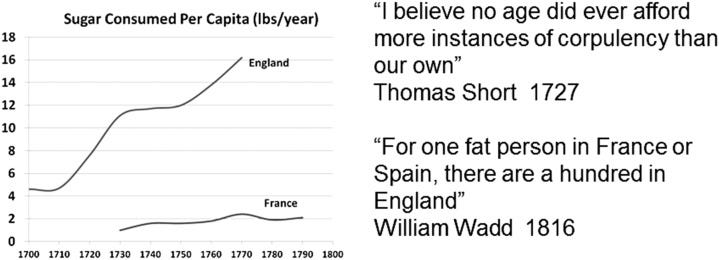
Still, breakfast within the 13 colonies remained simple and relatively sugar-free… like hasty pudding (cornmeal porridge topped with butter) or scrapple (fried pork scraps battered with cornmeal or wheat).
Late 19th Century — the invention of “cereal”
Breakfast itself grew in size and complexity throughout the late 1800s as American society progressed from subsistent agrarianism to commercialized agriculture and industrialism. If you’ve never read The Little House on the Prairie books, the Wilders were a wealthier farming family which was reflected in their elaborate breakfast spreads…
There was oatmeal with plenty of thick cream and maple sugar. There were fried potatoes, and the golden buckwheat cakes, as many as Almanzo wanted to eat, with sausages and gravy or with butter and maple syrup. There were preserves and jams and jellies and doughnuts. But best of all Almanzo liked the spicy apple pie, with its thick, rich juice and its crumbly crust. He ate two big wedges of the pie.
from Farmer Boy by Laura Ingalls Wilder
Ah - I spot pie! So they were eating dessert for breakfast in the 1860s! But the key difference is that the Wilders were prosperous commodity farmers who produced potatoes ($500/crop!) and butter (500lbs!) at scale to be able to afford the breakfast spread. Perhaps they were burning so many calories hauling logs, milking cows, and harvesting potatoes that they deserved the sugary apple pie.
The Ingalls on the other hand were smaller subsistence farmers whose average income reflected a more common breakfast spread at the time…usually bacon and fried potatoes or pancakes with a drizzle of maple syrup. Overall, nothing too sweet!
It wasn’t until the invention of cereal as we know it today that sugary foods became democratized in the American breakfast. In 1863, James Caleb Jackson created “granula” from graham flour, meant to be soaked overnight with cold milk. Fifteen years later, John Harvey Kellogg came along (both were religious vegetarians, but definitely not friends) and slightly tweaked the recipe and renamed it “granola” (yes, there was a lawsuit). At first, the recipe did not include sugar and was marketed as a health food.
Now this is where the cereal lore gets wild.
The next main cereal to be commercialized was Wheat Chex, but it was first called Shredded Ralston.
The creator was Albert Webster Edgerly who founded Ralstonism, a cultish social reform movement that promoted racial euthanasia and a whole grain diet. At the time, animal feed company Purina Mills began making a version of Wheat Chex cereal (an homage to their checkerboard logo) and received endorsement from Webster to market it as Shredded Ralston. The cereal was a hit (at least within a certain demographic shall I say?) and Purina was renamed Ralston-Purina in 1902.
Side note, I went down a Purina rabbit hole and couldn’t resist sharing this random fact…
What do Keystone ski resort in Colorado and Chex Mix have in common? They were both owned by Ralston-Purina at some point. Keystone even has a green run called Checkerboard Flats in reference to the company’s logo. As a native Coloradan who vividly remembers skiing Keystone and driving on the I-70 past the stinky Puppy Chow mill, but never the same weekend, this connection was just so weird to me.
So we still haven’t gotten to the point in history when cereal became super sugary.
1950s — TV and Frosted Flakes
Based on my internet diggings, I would point to Tony the Tiger and Frosted Flakes as the earliest example of cereal being marketed as “sugary”. The target audience was children watching Saturday morning cartoons on TV who would then implore their mothers to buy it in the store.
"They're grrreat!"
2000s: The Internet and Diet Culture
The caloric consumption of cereal continued to rise, as did sugar consumption per capita up until the 2000s (see both charts below). So what happened at the turn of the millennium? Did people wake up wanting to be healthier overnight?
The generation of millennials raised on sugary Frosted Flakes, Lucky Charms, and Fruit Loops were ready to embrace something else…diet culture. Sugar, begone! And say hello to some good old fiber, with a healthy dose of body dysmorphia and constant comparison thanks to the emergence of the Internet. Clearly the cereal companies had to find a way to re-capture consumer interest. This is why the number of cereal varieties skyrocketed in the 2000s, but many only lasted on the market for as long as 5 years before being discontinued.
Since then, the cereal players have pivoted towards higher growth markets such as Latin America and Asia where sugar consumption is still on the rise…
When did breakfast become so sweet? I’d point to the proliferation of digital media and the cereal industry.
Not sure if there’s a happy ending to all this other than at least we know we shouldn’t be eating Frosted Flakes every day. I certainly did not expect to read about Chex Mix’s cultish origins this morning…





